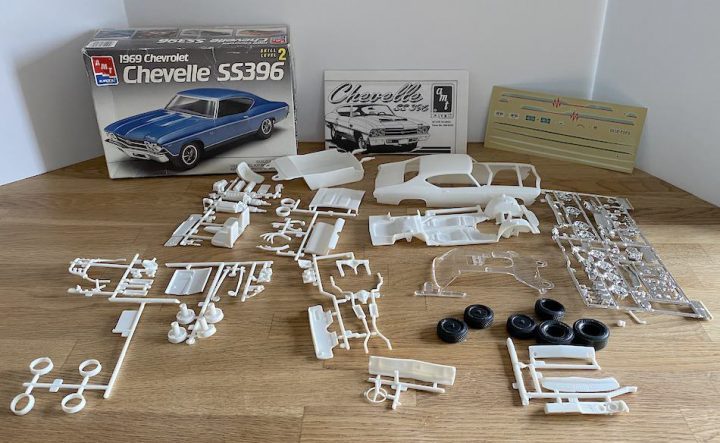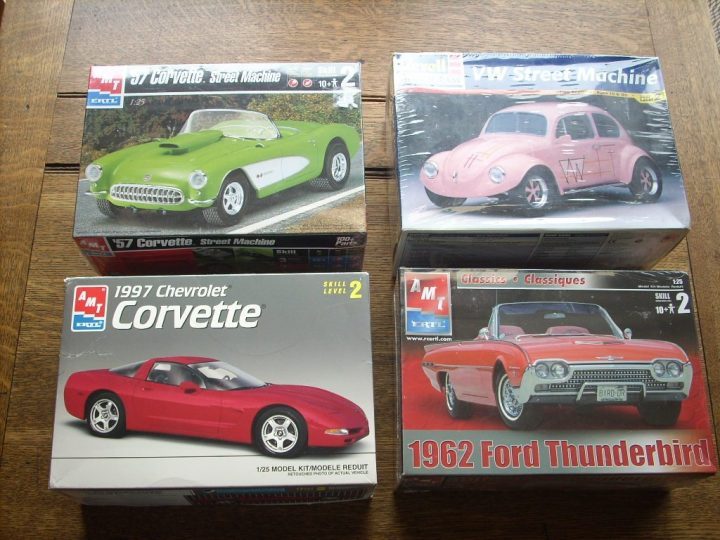My dad got me my first plastic model kit when I was nine. It was an F-15 Eagle, something I tinkered at for a few days, until I got to the decals. This stoked my interest in aircraft, and later on widened to anything with an engine. With or without an afterburner.
With the onset of the pandemic, many traditional hobbies have made a comeback. One of these is assembling model kits, according to step-by-step instructions. Beginner kits are available for younger kids, while anyone ready for a challenge will go for kits requiring higher skill levels.
What are Model Kits?
Model kits consist of a specified number of parts that the hobbyist needs to assemble. The parts may be made of various materials, like wood or metal, but plastic kits are the ones that you’ll see most.
The parts can either be snapped together in beginner kits, and those appropriate for young ages, or need to be cut off a frame, or more precisely a sprue. Each part is numbered and glued in the position specified by a diagram. Once the final product is assembled, it can be painted and have decals applied.
Plastic model kits are mainly vehicles. This includes detailed plastic model race cars, 4WDs, trucks, ships, civilian and military airplanes, and motorcycles. Current and previous warplanes, tanks, armoured cars and hardware, as well as construction and farm machinery, educational and historical kits are also sold.

Benefits of Model Building
Assembling a model kit piece by piece is both educational and fun. It promotes motor skills, attention to detail, and builds patience. And it inspires curiosity beyond the brief description of the vehicle you’re building. After getting involved with the hobby, hobbyists soon want to know how fast the real cars are, and the engines that power them, as well as learn which aircraft had the most kills, and which tanks won wars. This can be a hobby in itself, or one that grows into something more profound.

Getting the Right Model Kit – What to Look for?
First consider whether this is for you or a gift. Kids soak up new material and hobbies pretty quick, but choosing what interests them might be harder. Planes and speed always interested me, so dad got it right from the start.
Skill Levels
Once you’ve settled with what type of vehicle, background or figure you’re getting, consider the skill level. Model kits are sold for beginner, intermediate and advanced hobbyists. Skills levels are usually arranged in five levels. Basic beginner kits have the least parts, require little previous knowledge, and are fairly quickly to build.
They have pieces that are snapped together, and there’s no gluing or painting involved. Level 2 have a few dozen pieces that are glued, and some will need paint. Moving up, level 3 has roughly a hundred piece, requires a bit more adeptness, more gluing and painting and can include decals as a final touch.
More advanced kits, labelled as level 4 and 5 have more detailed and smaller pieces needing a bit more attention, and number over 100 pieces. These will be the ones where more specific tools are used in detailing and finishing, and require more time to complete.

Size Matters – Scale
Scale is how much smaller the plastic replica is when compared to the real thing. There are different sizes in this respect. The most common is undoubtedly the 1/24 scale, meaning the plastic model vehicle is 24 times smaller than the real car, truck or ute.
To put that in perspective, a real Lamborghini Aventador is 4780mm long and 2030mm wide. A 1/24 scaled version then should come in at just under 200mm in length and 85mm width. This size of plastic model race cars offers just the right balance between detail, without feeling too big to work with.
However, there are larger cars available, at 1/20, 1/12 and 1/10 scale, and these will have more room for life-like details, but they are also somewhat dearer. Smaller cars, at 1/32 and 1/50 scale will be quicker and easier to build, but may miss on the few specifics of the bigger models.
For motorbikes, the preferred scale is 1/12 so there’s more room and parts to play with. Bigger real-life military vehicles, like tanks, armoured cars and aircraft, come in at a smaller model size, with 1/35, 1/48 and 1/72 being the most popular sizes here.

Modelling Tools
Tools used to assemble and detail the plastic model can come with the kit, or are sold separately, so take this in mind if you’re buying as a present. Generally, beginner kits will have everything needed, whereas more advanced kits require buying additional tools.
This will include glue and adhesives, cutting tools like scissors, knives, tweezers and pliers, and detailing tools like sandpaper and files. There are also assorted brushes and different paints (primers, thinner and finishing paint). When your project is done, display it on a stand.

Piece by Piece
All kits come with instructions for assembly. Each part is numbered. If there is more than one sprue, then these are often lettered. After separating the parts form the sprue, the fun part begins. Once you’ve carefully attached each part, it’s time to remove any rough edges and apply paint and then the decals. Remember, if you’re a complete novice, start from easier levels and work your way up.